
Torcello is a sparsely populated island at the northern end of the Venetian Lagoon, in north-eastern Italy. It was first settled in 452 CE and has been referred to as the parent island from which Venice was populated. It was a town with a cathedral and bishops before St Mark's Basilica was built.
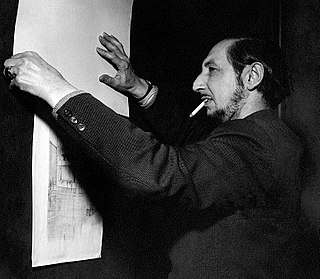
Carlo Scarpa was an Italian architect, influenced by the materials, landscape and the history of Venetian culture, and by Japan. Scarpa translated his interests in history, regionalism, invention, and the techniques of the artist and craftsman into ingenious glass and furniture design.

Mazzorbo is one of various islands in the northern part of the Lagoon of Venice. Like the other islands in this part of the lagoon, it was the site one of the earliest settlements in the lagoon which predated the development of Venice. However, these islands then declined and were eventually abandoned. In the 1980s the architect Giancarlo De Carlo built a brightly coloured residential neighbourhood to help to repopulate Mazzorbo. In 2019 its population was 256. It is linked to Burano by a wooden bridge. It was once an important trading centre but is now known for its vineyards and orchards. Its main attraction is the fourteenth century church of Santa Caterina.

Giovanni Domenico Nardo was an Italian naturalist from Venice, although he spent most of his life in Chioggia, home port of the biggest fishing flotilla of the Adriatic. He learned taxidermy and specimen preparation from his uncle, an abbot. He went in a high school in Udine and studied medicine in Padua, where he reorganized the zoological collections. In 1832 he reorganized the invertebrate collection at the Imperial Natural History Museum in Vienna and in 1840 he became Fellow of the Istituto Veneto di Scienze, Lettere ed Arti, an academy whose aim is "to increase, promulgate, and safeguard the sciences, literature and the arts". Nardo wrote hundreds of scientific publications ranging from medicine and social sciences, philology, technology, physics, but mostly on Venetian and Adriatic zoology. In marine biology, Nardo wrote on algae, marine invertebrates, fishes and sea turtles. A vast collection of his manuscripts and his personal library is preserved in the Natural History Museum of Venice.
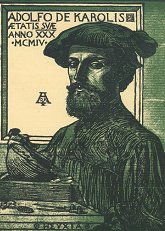
Adolfo de Carolis (1874–1928) was an Italian painter, xylographer, illustrator and photographer. He is generally associated with Art Nouveau, although many of his works could also be classified as Symbolism.

The Palazzo Grimani of Santa Maria Formosa is a State museum, located in Venice in the Castello district, near Campo Santa Maria Formosa.

The Zone 1 of Milan, since 2016 officially Municipality 1 of Milan, is one of the 9 administrative divisions of Milan, Italy.
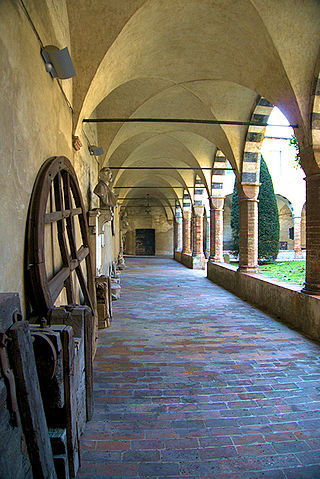
The Civic Museum of Crema is an Italian museum located in Crema.

Raffaele Tafuri (1857-1929) was an Italian painter. He was born on January 27, 1857, in Salerno. He died in 1929 in Venice.

The Polo Museale del Lazio is an office of Italy's Ministry of Cultural Heritage. Its seat is in Rome in the Palazzo Venezia.

Palazzo Patriarcale is a palace in the Piazzetta dei Leoncini, Venice, Italy. It is the seat of the Patriarchate of Venice.
The following is a timeline of the history of the city of Padua in the Veneto region of Italy.

Teodoro Francesco Maria Gasparo Correr was a Venetian abbot and art collector, most notable as the founder of the Museo Correr.
Ammiana was a settlement in an archipelago in the northern part of the Lagoon of Venice which has disappeared. Its islands were part of a larger number of islands in this part of the lagoon which also included the island group of the next-door settlement of Costanziaco and the islands of Torcello, Burano and Mazzorbo to the south-east. The islands of Ammiana were between the right and left banks of the lagunar channels which today are called della Dolce and San Felice. Another island, which was called tumba della Leseda and is now called La Salina, which lies on the right (eastern) bank of the San Felice channel, was also part of this settlement.
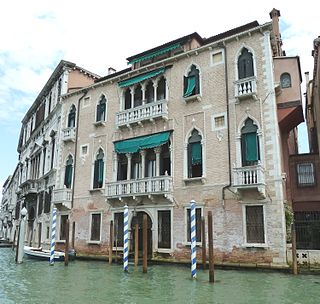
Palazzo Erizzo Nani Mocenigo is a palace in Venice located in the San Marco district and overlooking the Grand Canal between Palazzo Da Lezze and Palazzo Contarini delle Figure.
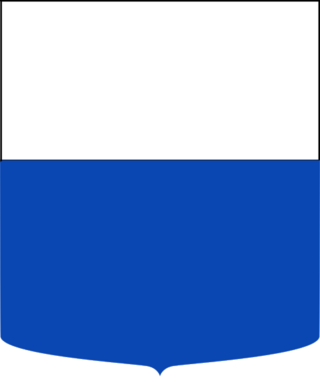
CavaliereGirolamo Zulian was a Venetian nobleman, ambassador, patron of the arts, art collector and Senatore Amplissimo. A member of the House of Zulian, he is best known for his leading art collection and for being one of the earliest patrons of Canova, a great friend of his, from whom he commissioned the Theseus and the Minotaur in 1781, while serving as ambassador to Rome. Zulian is credited as having played a fundamental role in Canova's rise to fame.
The Camerlenghi di Comun were senior fiscal officials of the Republic of Venice.

















